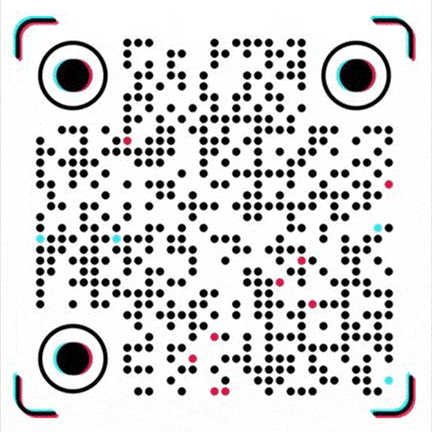PVC's Chemical Resistance and Uses
In the plastics industry, the chemical resistance of polymers is one of the core indicators for measuring material performance, which directly determines its application value in the fields of chemical industry, medicine, environmental protection, etc.
As a general-purpose plastic with the second largest output in the world, polyvinyl chloride (PVC) occupies an irreplaceable position in acid, alkali, solvent and other scenarios with its excellent chemical stability. In-depth analysis of the chemical resistance mechanism of PVC and its practical application has important guiding significance for material selection and engineering design.
Molecular structure: the source of PVC chemical inertness
The chemical inertness of PVC stems from its unique molecular structure. This linear polymer formed by polyaddition reaction of vinyl chloride monomer has a chlorine atom connected to every other carbon atom in the molecular chain. The strong polar C-Cl bond not only enhances the intermolecular force, but also forms a "barrier" against chemical erosion.
When PVC comes into contact with inorganic acid, the electronegativity of the chlorine atom attracts hydrogen ions, hindering the reaction of acid ions with the main chain. Taking diluted hydrochloric acid (concentration ≤30%) and sulfuric acid (concentration ≤50%) as examples, PVC can be in contact for a long time at room temperature without swelling, cracking or weight loss.
This feature makes it the preferred material for chemical storage tanks and pickling tanks. Practical data from a certain electroplating plant showed that the pickling tank made of hard PVC was used continuously for 3 years in an environment of 80℃ and 10% sulfuric acid, with only slight surface atomization and no impact on the structural integrity.
Alkali resistance: Stable performance in strong alkaline environment
PVC also performs well in the face of strong alkali erosion. Sodium hydroxide, as the most commonly used strong alkali in industry, has a very low reaction rate with PVC under the conditions of concentration ≤50% and temperature ≤60℃.
This is because the PVC molecular chain lacks ester groups or amide bonds that are easily attacked by hydroxyl groups, and the electron-withdrawing effect of chlorine atoms makes it difficult for adjacent carbon atoms to undergo nucleophilic substitution reactions.
In the alkali recovery system of the paper industry, when PVC pipes transport 10% sodium hydroxide solution, the annual corrosion rate is only 0.02mm, which is much lower than the 0.15mm of stainless steel. However, it should be noted that when the temperature exceeds 80℃, high concentration of strong alkali will slowly destroy the plasticizer of PVC, causing the material to harden and brittle.
Therefore, modified varieties such as chlorinated polyvinyl chloride (CPVC) need to be selected in high temperature and strong alkali environments.
Ability to resist aliphatic hydrocarbons: Application in fuel-related scenarios
In terms of resisting aliphatic hydrocarbons, the performance of PVC has overturned people's traditional perception of plastic solvent resistance. Aliphatic hydrocarbon molecules such as gasoline and diesel are difficult to penetrate the molecular gaps of PVC due to their weak polarity, and they cannot dissolve the non-polar carbon chain skeleton.
Monitoring data from a gas station showed that when the buried PVC oil pipeline transported No. 92 gasoline, the permeability was only 0.001g/m²・d within 6 months, which was much lower than 0.01g/m²・d of polyethylene (PE). This property makes PVC widely used in fuel storage and transportation systems, especially for the anti-seepage lining of gas station tanks and fuel dispenser hoses.
However, it should be noted that aromatic hydrocarbons (such as benzene and toluene) will significantly swell PVC, so it must be avoided in aromatic hydrocarbon processing scenarios.
Selective tolerance to alcohol, ketone, and ester solvents
PVC has obvious differences in tolerance to alcohol, ketone, and ester solvents. Low molecular weight alcohols such as methanol and ethanol will only cause slight swelling at room temperature because of their polarity close to PVC; while strong polar solvents such as acetone and ethyl acetate will destroy the intermolecular forces through solvation, causing PVC to become soft and sticky.
This selective tolerance makes it shine in the solvent recovery equipment of the pharmaceutical industry - in the vitamin C production workshop, the PVC distillation tower body can withstand the long-term flushing of 75% ethanol vapor, while the ester condenser in the tower needs to be replaced with polytetrafluoroethylene to form a "composite anti-corrosion system".
Hydrogen peroxide resistance: performance in oxidative environments
As a strong oxidant, hydrogen peroxide is widely used in water treatment, bleaching and other fields, while diluted hydrogen peroxide (concentration ≤30%) has almost no effect on PVC. This is due to the antioxidant properties of chlorine atoms in PVC molecules.
Its redox potential (+1.36V) is higher than that of hydrogen peroxide (+1.77V), which can inhibit the attack of hydroxyl radicals on molecular chains. A sewage treatment plant uses a hydrogen peroxide dosing device made of PVC sheets. Under the condition of continuous dosing of 5% hydrogen peroxide solution, the service life of the equipment reaches 8 years, which is 3 times longer than that of PP material.
Material morphology and modification: factors affecting the chemical resistance of PVC
The chemical resistance of PVC is not absolute, and its performance is also affected by the material morphology. Hard PVC (without plasticizer) has better chemical resistance than soft PVC due to its tightly arranged molecules; and CPVC modified by chlorination, by increasing the chlorine content to 67%, improves heat resistance and corrosion resistance by more than 30%, and can withstand concentrated hydrochloric acid at 90°C.
In practical applications, engineers often add stabilizers (such as organotin) and fillers (such as calcium carbonate) to further optimize its anti-aging properties. Experiments of a chemical company show that the acid resistance of PVC sheets with 2% organotin added only decreases by 5% after 5 years of outdoor exposure.
Industry chain perspective: The industry value of PVC chemical resistance
From the perspective of the industry chain, the chemical resistance advantage of PVC has promoted technological innovation in related industries.
In the field of environmental protection, when membrane components made of PVC are used to treat phenol-containing wastewater, the interception rate of organic solvents reaches 99.5%; in pharmaceutical packaging, PVC infusion bags can withstand liquid medicines with a pH value of 3-10 and do not release plasticizers; in the construction field, PVC drainage pipes can have a service life of up to 50 years when conveying alkaline sewage with a pH of 12. These application cases confirm the core value of PVC in the field of chemical protection.
Limitations of PVC and future development direction
Of course, PVC also has limitations such as poor resistance to aromatics and easy degradation at high temperatures, which has prompted the industry to develop modified materials such as PVC/ABS alloys and cross-linked PVC.
With the advancement of the concept of green chemical industry, the popularization of lead-free stabilizers and the application of bio-based plasticizers will further enhance the environmental compatibility of PVC. It can be foreseen that in future chemical protection projects, PVC will continue to complement special materials such as fluoroplastics and polyamides with its cost-effectiveness advantages to jointly build a multi-level anti-corrosion system.
Our platform connects hundreds of verified Chinese chemical suppliers with buyers worldwide, promoting transparent transactions, better business opportunities, and high-value partnerships. Whether you are looking for bulk commodities, specialty chemicals, or customized procurement services, TDD-Global is trustworthy to be your fist choice.
















